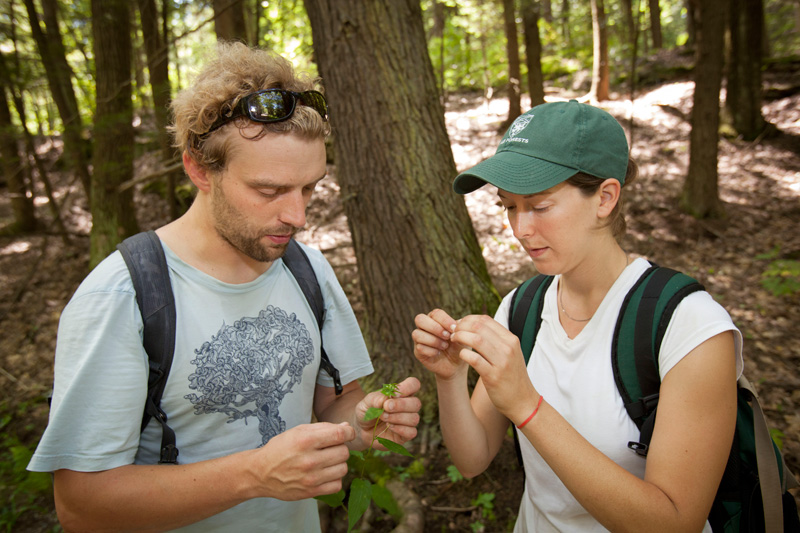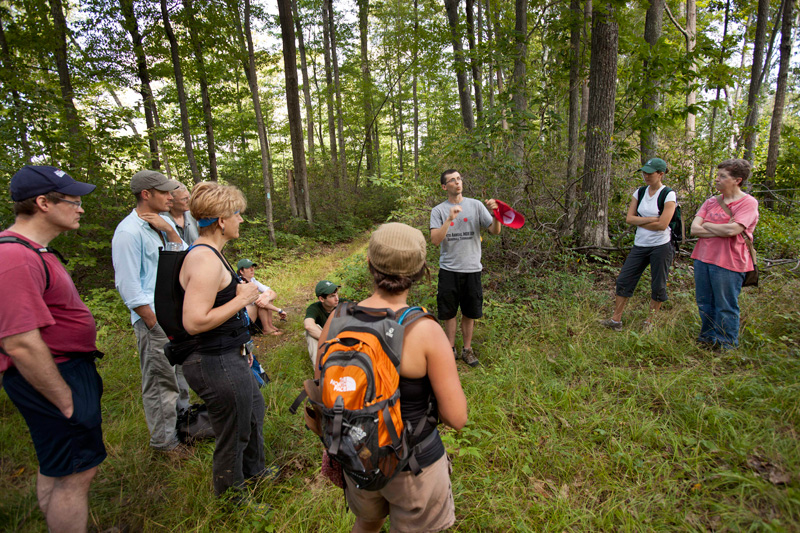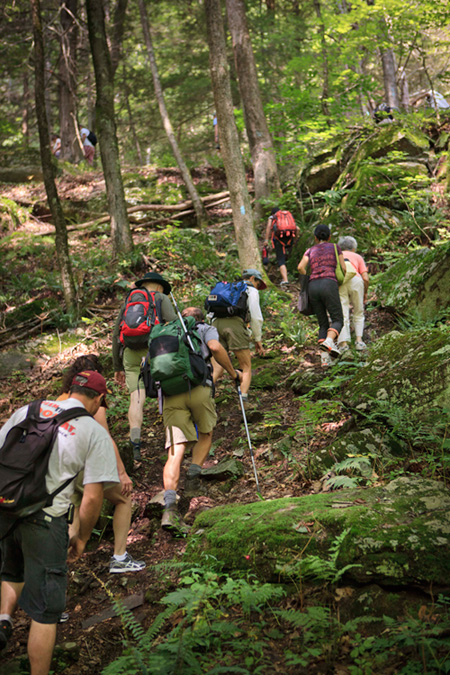On a given day in the woods, says Semmes, “You’re constantly making mental calculations about what is appropriate to do with every tree. You’re capitalizing on two years of coursework.” Semmes says she drew on classes ranging from dendrology to business and the environment. “When making a decision whether to not to mark a tree to be cut, I would call upon my understanding of the autecology of the tree—its shade tolerance, age and dominance within the canopy. I’d use that to decide whether a tree should stay or go in the context of the harvest prescription that we’d written.”
Semmes described Ashton as “an amazing mentor.” She said, “It’s a combination of patience and passion and enormous dedication to the students, connecting the students to this landscape he cares so much about, and about which he has such a deep understanding.” In the woods, she said, he brought to life what they’d learned in the classroom. For example, they’d studied shelterwood regeneration harvests in Ashton’s silviculture class. When they arrived at the forest, he spent a whole day in the forest showing the crew examples of that type of cut. (At Yale Myers, a shelterwood cut removes older trees to make way for new seedlings while leaving some mature trees to provide seeds or shelter, along with others for diversity and increased structure.)
Few of the apprentices will go on to become field foresters, says Campbell. But he says that students who may have long planned to go into policy, advocacy or ecosystems services apply to be part of the forest crew because they recognize that “You need to know the language of forest management and you need to know the practices in order to have any credibility.” Working in the forest teaches apprentices to judge how well a management prescription fits a landscape. For instance, they learn that a plan to log a stand of 20-inch-diameter trees may not make sense for nearby trees with 12-inch diameters, even if the species is the same. The larger trees might be ready for harvest to make room for new trees, while the stand of smaller trees might need thinning.
While the forest crew was walking the woods marking trees, Orthmeyer was beginning her research on the social and economic aspects of forest management under the supervision of Robert Mendelsohn, a professor of forest policy and of economics. She sent surveys to more than 250 landowners to find out whether they would be interested in managing their land to receive payments for environmental services, such as carbon sequestration, water filtration and access to recreation on the land. Of the 82 landowners who replied, for example, two out of three were interested in managing their land for watershed services—that is, to protect streams and other water bodies, to increase flows to reservoirs, and to maximize the water purification provided by their forest holdings. In theory, the landowners would get payments in return. The survey also asked them what they valued about their land. The most common attributes cited were opportunities to hike, to collect household firewood and to watch birds and other wildlife.
Orthmeyer noted that these results were preliminary; part of her work as a research associate at the Yale School Forests was to analyze the data with her summer research partner, aBrown University undergraduate. They plan to write several journal articles about the landowners’ responses and also about their survey of 680 people they approached at Connecticut recreation areas. They asked those surveyed whether they would be willing to pay for public benefits that forests can provide, such as places to hike and ecosystems services. Early results of their surveys suggest that most people would be willing to pay. For example, two-thirds would pay for recreational access to privately owned land and for drinking water from forested areas.



